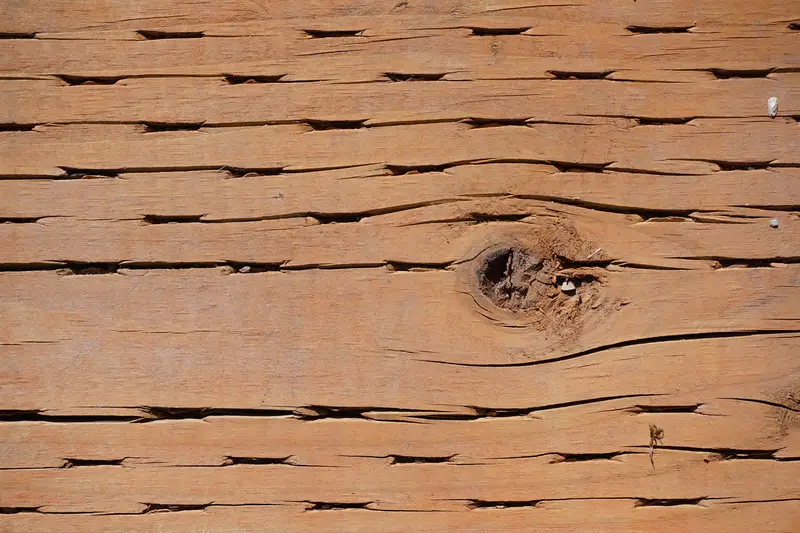Introduction
Being concerned about your raised garden beds is completely fair as it can be a permanent fixture for perennial plants to settle in and mature. So, you have to choose this wisely.
Chances are you may be facing issues using pressure-treated lumber and searching alternatives to pressure-treated lumber for raised beds, as you’re reading this.
Well, do not worry anymore because we are going to show you some useful alternatives in a detailed way. Also, we added an FAQ section to rub off your confusion about this topic.
Let’s dive in!

What’s Wrong with Pressure-Treated Lumber?
Before discussing the alternatives, let’s have a clear idea about why the treated lumber seems problematic for your raised garden beds.
- It’s true that the preservatives added to treated lumber provide resistance to certain types of decay but they cannot prevent damage caused by constant exposure to moisture and direct sunlight.
- Also, preservative chemicals have various levels of toxicity. The research said that the chemicals added to treated lumber drain into the nearby soil.
What Are the Alternatives?
Here you go with some ideas (using wood, stones, and so on) that can be amazing replacements of pressure-treated lumber.
Western Red Cedar (Wood)
This one grows along the coast from Oregon to Alaska, also in the state of Montana and Idaho. Western Red Cedar is light in weight as well as the heartwood. US forest product laboratory quoted about it, ‘resistant to very resistant’ to decay. However, this is not immune to attack by termites and beetles. Cedar can last for 10-15 years.
But it’s quite expensive, around 2-3 times the cost of the cheaper wood.
For a raised bed construction, the ‘rough green’ western red cedar 2×6, 2×8, and 4×4 would be worth recommending.
Douglas Fir (Wood)
Most of the Douglas fir productions come from the Coastal states of Oregon, California, and Washington. Also, it is sourced from the Rocky Mountain states. It is generally used for the manufacturer of sashes, general millwork, and doors. Moreover, it is used in marine applications and in boat & shipbuilding. It can last for 5-7 years.
For a raised bed construction, ‘rough green’ douglas fir 2×6, 2×8, and 4×4 is worth recommending.
White Pine or Hemlock (Wood)
This is widely used for raised garden beds, barn construction, fencing, and repair. There is no guarantee for how long the wood will last in the ground, but if they are in the right conditions, some people report that it lasts 5-7 years.
Black Locust (Wood)
Black locust, also known as Robinia makes incredibly durable raised garden beds. It is also resistant to decay and insects. Black locust is the eco-friendly option for garden raised beds. It’s also known to last up to 20 years.
Importantly, it is naturally rot-resistant without toxic chemicals (unlike pressure-treated lumber), so it will last many years even if subjected to the bacterial and fungal action of fertile garden soil.
But black locust is quite expensive, one of these types of wood may run you 3-4 times the cost of cheaper wood.
Concrete Blocks
Concrete blocks are easy to work with and can be installed right over the top of grass or weeds. In addition, it will add extra costs to the project. Yet, you can keep the budget in check by using inexpensive materials, or reusing items you already have. Worth mentioning, it’s also hard for a DIY project.
Recycled Plastic Lumber
Recycled plastic lumber, made out of consumer waste offers you a durable, maintenance-free, rot-proof alternative to timber. Also, it is lo-carbon and highly environmentally friendly.
You can purchase one from any suppliers or you just can make your own. Pick the one which does not leach harmful or toxic chemicals into the ground as they can play a good role in growing organic vegetables.
Cinder Block
This can be another option for you. Cinder block is quite cheap and available at any local hardware store. It also is very durable and lasts for many years. But it is heavy to lift and can hold heat. This can be a positive thing in the winter garden but, when it is summer, it can really raise the temperature of your plants.
Rocks
This material can be free depending on where you’ll obtain you. Also, using rocks will add beauty to your raised garden beds, it will give a very rustic & cottage look. But it can be very heavy to lift and work with. Unless you can fill the space between every rock with cement, weed, and grass will make their way in.
Galvanized Metal or Stock Tanks
Galvanized metal or stock tanks will give your garden a cool industrial look and will be the quickest to set up of all raised garden box material. It’s also easier to maintain. But it can be very expensive. Although it’s been galvanized to protect against rust that doesn’t mean it is completely protected, and these can rust over time.
Steel
Undoubtedly, it provides an industrial look and takes up less space. But the cost can be high and steel will definitely rust and be affected by the weather. This is not ideal for growing edible vegetables.
Alternatives To Pressure-Treated Lumber for Raised Beds – FAQs
Question: What should I put in the bottom of a raised bed?
Answer: You can feel the bottoms with a layer of leaves, straw, and grass clippings. Next, add your soil (this mixture will break down into rich compost over time).
Question: How deep should a raised garden bed be?
Answer: 8-12 inches is generally adequate. But vegetable beds should be around 12-18 inches deep.
Question: What is the best soil mix for raised beds?
Answer: 60% topsoil, 30% compost, and 10% of potting soil would be recommended.
Conclusion
Voila! You now know many alternatives to pressure-treated lumber for raised beds. You have a lot of options, choose one of them which is a good fit for you. Remember using hand gloves while working in the garden.
Good luck!
As an Amazon Associate I earn from qualifying purchases.

